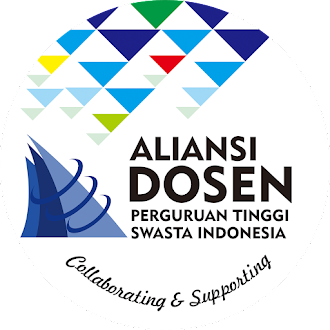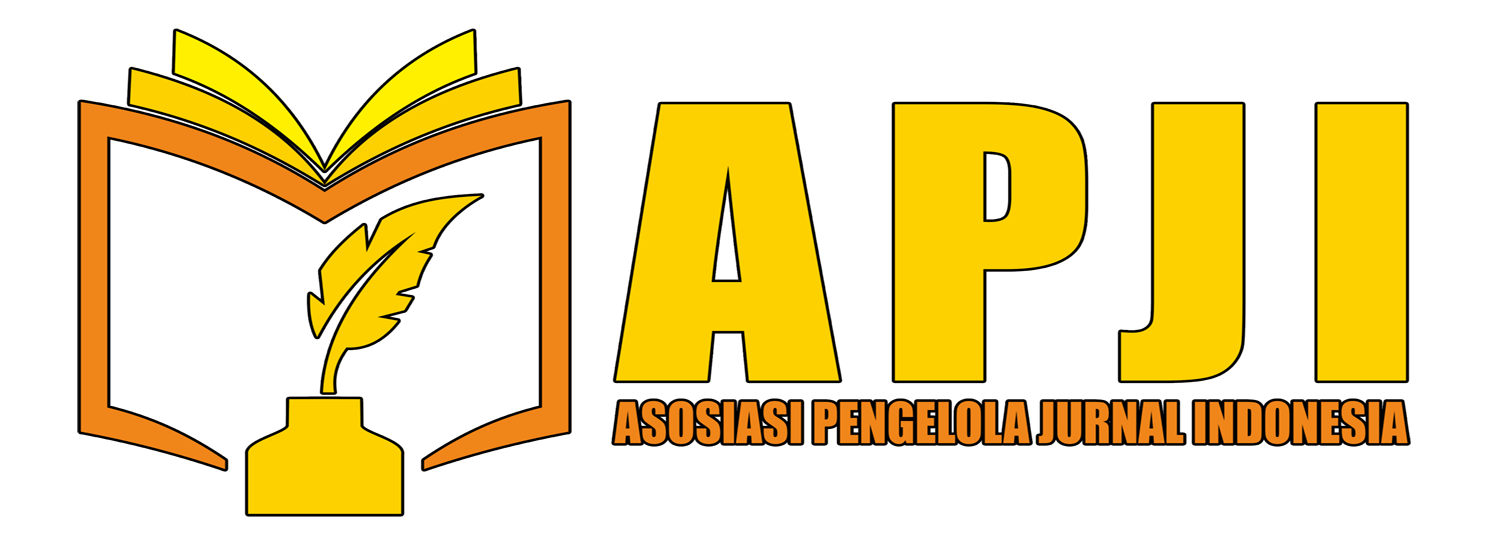HEALING DURATION OF SUPERFICIAL WOUNDS AFTER SUNNAH CUPPING THERAPY: A LITERATURE REVIEW
DOI:
https://doi.org/10.62567/micjo.v2i2.686Keywords:
complementary traditional therapy, herbal treatment for minor wounds, natural skin regeneration, non-surgical superficial wounds, post-therapy healing durationAbstract
Sunnah cupping therapy is widely recognized as a traditional treatment believed to eliminate stagnant blood, enhance circulation, and accelerate healing. However, concerns remain regarding wound depth and skin recovery duration, especially in clinical settings. This study aims to systematically review scientific literature on the healing duration of superficial wounds resulting from cupping, factors influencing recovery, and the effectiveness of herbal topical treatments in supporting natural skin regeneration. A systematic literature review was conducted using publications from 2015 to 2025 sourced from PubMed, Scopus, ScienceDirect, and Google Scholar. The analysis focused on non-surgical superficial wounds, post-cupping wound management, and the use of olive oil, black seed oil, and coconut oil in complementary traditional therapy. Findings indicate that cupping incisions typically reach only the epidermis and upper dermis, with a depth of 0.5–1 mm. These minor wounds generally heal within 3 to 7 days, depending on patient age, skin condition, anatomical location, and aftercare quality. The application of topical herbal agents has been shown to enhance healing through anti-inflammatory, antioxidant, and regenerative mechanisms. In conclusion, Sunnah cupping can be classified as a safe and non-invasive therapy with a relatively short healing duration. Herbal-based wound care offers a natural, accessible, and effective treatment alternative, supporting the integration of cupping therapy into modern evidence-based complementary medicine. Further development of standardized post-cupping care protocols is recommended to optimize clinical implementation and ensure consistent patient outcomes.
Downloads
References
AlBedah, A. M., Elsubai, I., Qureshi, N. A., Aboushanab, T., Ali, G. I. M., El-Olemy, A. T., … & Alqaed, M. (2019). The medical perspective of cupping therapy: effects and mechanisms of action. Journal of Traditional and Complementary Medicine, 9(2), 90-97. https://doi.org/10.1016/j.jtcme.2018.03.003
Alkhamaiseh, S. I., Bazzari, A. H., Jafari, A. H. A., & Bazzari, F. H. (2023). The public perceptions on wet cupping therapy (hijama) in saudi arabia. Journal of Acupuncture and Meridian Studies, 16(5), 176-182. https://doi.org/10.51507/j.jams.2023.16.5.176
Apriza, A. (2017). Pengaruh pemberian minyak zaitun (olive oil) terhadap ruam popok pada bayi di rsud bangkinang tahun 2016. Jurnal Ners, 1(2). https://doi.org/10.31004/jn.v1i2.113
Bao, F., Ge, P., Wu, Z., Zhuang, H., Zhang, Z., Huan, Z., … & Chang, J. (2020). Bioactive self‐pumping composite wound dressings with micropore array modified janus membrane for enhanced diabetic wound healing. Advanced Functional Materials, 30(49). https://doi.org/10.1002/adfm.202005422
Boer, M., Duchnik, E., Maleszka, R., & Marchlewicz, M. (2016). Structural and biophysical characteristics of human skin in maintaining proper epidermal barrier function. Advances in Dermatology and Allergology, 1, 1-5. https://doi.org/10.5114/pdia.2015.48037
Boyce, S. T. and Lalley, A. L. (2018). Tissue engineering of skin and regenerative medicine for wound care. Burns &Amp; Trauma, 6. https://doi.org/10.1186/s41038-017-0103-y
Brito, S., Baek, M. J., & Bin, B. (2024). Skin structure, physiology, and pathology in topical and transdermal drug delivery. Pharmaceutics, 16(11), 1403. https://doi.org/10.3390/pharmaceutics16111403
Dafriani, P., Niken, N., Ramadhani, N., & Marlinda, R. (2020). Potensi virgin coconut oil (vco) pada minyak herbal sinergi (mhs) terhadap ulkus diabetes. Jurnal Kesehatan Perintis (Perintis S Health Journal), 7(1), 51-56. https://doi.org/10.33653/jkp.v7i1.418
Dalton, E. and Velasquez, B. (2017). Cupping therapy: an alternative method of treating pain. Public Health - Open Journal, 2(2), 59-63. https://doi.org/10.17140/phoj-2-122
Donato‐Trancoso, A., Monte‐Alto‐Costa, A., & Romana‐Souza, B. (2016). Olive oil-induced reduction of oxidative damage and inflammation promotes wound healing of pressure ulcers in mice. Journal of Dermatological Science, 83(1), 60-69. https://doi.org/10.1016/j.jdermsci.2016.03.012
Ekinci, A. and Pehlivan, G. (2020). Cupping therapy as alternative medicine turns into a trigger of disease via the koebner phenomenon: a case report of hijama‐induced psoriasis and review of the literature. Dermatologic Therapy, 33(6). https://doi.org/10.1111/dth.14264
El‐Elimat, T., El-Qaderi, H., Hananeh, W., AlSamen, M., Sharie, A., Alshehabat, M., … & Alali, F. (2023). Evaluation of the wound healing potential of hypericum triquetrifolium turra: an experimental animal study and histopathological examination. Scientia Pharmaceutica, 91(1), 16. https://doi.org/10.3390/scipharm91010016
Gufron, M., Sam, A., Karim, M., & Hasbi, B. (2023). Uji efektivitas daun saliara (lantana camara l.) terhadap penyembuhan luka sayat (vulnus laceratum) dan memar (vulnus contussum) terhadap mencit (mus musculus). Jurnal Kesehatan Tambusai, 4(4), 6502-6510. https://doi.org/10.31004/jkt.v4i4.22204
González‐Acedo, A., Ramos‐Torrecillas, J., Illescas‐Montes, R., Costela‐Ruiz, V. J., Ruíz, C., Melguizo‐Rodríguez, L., … & García‐Martínez, O. (2023). The benefits of olive oil for skin health: study on the effect of hydroxytyrosol, tyrosol, and oleocanthal on human fibroblasts. Nutrients, 15(9), 2077. https://doi.org/10.3390/nu15092077
Horng, H., Chang, W., Yeh, C., Huang, B., Chang, C., Chen, Y., … & Wang, P. (2017). Estrogen effects on wound healing. International Journal of Molecular Sciences, 18(11), 2325. https://doi.org/10.3390/ijms18112325
Intang, N., Stevani, H., & Ratnasari, D. (2023). Efektifitas pemberian minyak kuda (equus caballus) untuk mempercepat penyembuhan luka pada kelinci jantan (oryctolagus cuniculus). Journal of Experimental and Clinical Pharmacy (Jecp), 3(1), 29. https://doi.org/10.52365/jecp.v3i1.432
Karimi, Z., Behnammoghadam, M., Rafiei, H., Abdi, N., Zoladl, M., Talebianpoor, M., … & Khastavaneh, M. (2019). <p>impact of olive oil and honey on healing of diabetic foot: a randomized controlled trial</p>. Clinical Cosmetic and Investigational Dermatology, Volume 12, 347-354. https://doi.org/10.2147/ccid.s198577
Khoso, A., Hammad, M., & Ahmed, M. (2022). Cupping therapy (حجامه) in the view of islamic teaching. Al Khadim Research Journal of Islamic Culture and Civilization, 3(1), 11-23. https://doi.org/10.53575/arjicc.v3.01(22)e2.11-23
Kruse, C., Nuutila, K., Lee, C., Kiwanuka, E., Singh, M., Caterson, E., … & Sørensen, J. (2015). The external microenvironment of healing skin wounds. Wound Repair and Regeneration, 23(4), 456-464. https://doi.org/10.1111/wrr.12303
Laurent, I., Manirakiza, A., Wang, K., Cheng, Q., & Li, Q. (2017). Efficacy and time sensitivity of amniotic membrane treatment in patients with diabetic foot ulcers: a systematic review and meta-analysis. Diabetes Therapy, 8(5), 967-979. https://doi.org/10.1007/s13300-017-0298-8
Lestari, T., Afrilia, A., & Prihartini, N. (2020). Analysis of standard operating procedures (sops) on cupping therapy in dki health services, jakarta. International Journal of Islamic and Complementary Medicine, 1(2), 91-107. https://doi.org/10.55116/ijim.v1i1.13
Lestari, T., Lusitawati, L., Afrilia, A., Suharyanto, F., Prihartini, N., Nurhayati, N., … & Siswoyo, H. (2019). Kepatuhan praktisi terapi tradisional bekam terhadap standar prosedur operasional. Holistik Jurnal Kesehatan, 13(2), 114-127. https://doi.org/10.33024/hjk.v13i2.1368
Maver, T., Maver, U., Kleinschek, K. S., Smrke, D., & Kreft, S. (2015). A review of herbal medicines in wound healing. International Journal of Dermatology, 54(7), 740-751. https://doi.org/10.1111/ijd.12766
Mosayan, G. A., S, S. H., & H, H. W. P. (2022). Pinaplast: plester luka dari ekstrak bonggol nanas (ananas comosus (l.) merr.) sebagai pengobatan alami luka sayat. Jurnal Edukasi Dan Sains Biologi, 4(1), 26-33. https://doi.org/10.37301/esabi.v4i1.24
Mulla, G., Ghawte, S., Raina, P., & Kaul-Ghanekar, R. (2019). Treatment of recurrent breast abscess by cupping therapy and raw papaya paste dressing: a case report. International Journal of Unani and Integrative Medicine, 3(3), 01-08. https://doi.org/10.33545/2616454x.2019.v3.i3a.87
Muthmainah, S. and Supriyatna, A. (2023). Pemanfaatan herbal habbatussauda (nigella sativa) untuk meningkatkan imunitas tubuh mahasiswa biologi uin sunan gunung djati bandung. JCS, 2(6), 1859-1863. https://doi.org/10.59188/jcs.v2i6.409
Mylanda, V., Ramadhan, N., & Viviani, R. (2021). Studi penambatan molekuler senyawa bioaktif biji habbatussauda (nigella sativa) terhadap erα sebagai alternatif pengobatan kanker payudara dalam upaya pemberian data ilmiah thibbun nabawi. Berkala Ilmiah Mahasiswa Farmasi Indonesia (Bimfi), 8(1), 13-24. https://doi.org/10.48177/bimfi.v8i1.44
Nabo, M. (2025). The role of skin stem cell in cupping therapy. International Journal of Complementary & Alternative Medicine, 18(1), 40-41. https://doi.org/10.15406/ijcam.2025.18.00723
Nasiri, M., Fayazi, S., Jahani, S., Yazdanpanah, L., & Haghighizadeh, M. (2015). The effect of topical olive oil on the healing of foot ulcer in patients with type 2 diabetes: a double-blind randomized clinical trial study in iran. Journal of Diabetes & Metabolic Disorders, 14(1). https://doi.org/10.1186/s40200-015-0167-9
Perren, S., Gatt, A., Παπάνας, Ν., & Formosa, C. (2018). Hyperbaric oxygen therapy in ischaemic foot ulcers in type 2 diabetes: a clinical trial. The Open Cardiovascular Medicine Journal, 12(1), 80-85. https://doi.org/10.2174/1874192401812010080
Rahavian, A., Hazrati, E., Azar, D., Allameh, F., Hojjati, S., Javanmard, B., … & Hamidi, R. (2021). Using dry human amniotic membrane in secondary intention wound healing after urological cancer surgery: the first randomized clinical trial in iran. International Journal of Cancer Management, 14(5). https://doi.org/10.5812/ijcm.111421
Ribeiro, B., Faria, R., Nogueira, J., Valença, S., Chen, L., & Romana‐Souza, B. (2022). Olive oil promotes the survival and migration of dermal fibroblasts through nrf2 pathway activation. Lipids, 58(2), 59-68. https://doi.org/10.1002/lipd.12363
Risniati, Y., Afrilia, A., Lestari, T., Nurhayati, N., & Siswoyo, H. (2020). Pelayanan kesehatan tradisional bekam: kajian mekanisme, keamanan dan manfaat. Jurnal Penelitian Dan Pengembangan Pelayanan Kesehatan, 212-225. https://doi.org/10.22435/jpppk.v3i3.2658
Sadiah, S. and Trianingsih, D. (2022). Perbandingan minyak kelapa dan minyak zaitun terhadap derajat ruam popok bayi 0-24 bulan. J. Nursing and Health Science, 1(2), 66-71. https://doi.org/10.58730/jnhs.v1i2.28
Suarni, E. and Badri, P. (2016). Uji efektifitas lendir bekicot (achatina fulica) dibandingkan dengan povidon iodine 10% terhadap penyembuhan luka sayat (vulnus scissum) pada mencit (mus musculus). Syifa Medika Jurnal Kedokteran Dan Kesehatan, 7(1), 9. https://doi.org/10.32502/sm.v7i1.1389
Taheri, M. and Amiri‐Farahani, L. (2021). Anti-inflammatory and restorative effects of olives in topical application. Dermatology Research and Practice, 2021, 1-9. https://doi.org/10.1155/2021/9927976
Wasliyah, S. (2018). Efektivitas penggunaan virgin coconut oil (vco) dan minyak zaitun untuk pencegahan luka tekan grade i pada pasien yang berisiko mengalami luka tekan di rsu kabupaten tangerang. Jurnal Medikes (Media Informasi Kesehatan), 5(2), 192-205. https://doi.org/10.36743/medikes.v5i2.60
Winter, R., Dungel, P., Reischies, F., Rohringer, S., Slezak, P., Smolle, C., … & Schicho, K. (2018). Photobiomodulation (pbm) promotes angiogenesis in-vitro and in chick embryo chorioallantoic membrane model. Scientific Reports, 8(1). https://doi.org/10.1038/s41598-018-35474-5
Zhao, R., Liang, H., Clarke, E., Jackson, C., & Xue, M. (2016). Inflammation in chronic wounds. International Journal of Molecular Sciences, 17(12), 2085. https://doi.org/10.3390/ijms17122085
Downloads
Published
How to Cite
Issue
Section
License
Copyright (c) 2025 Andik Isdianto, Novariza Fitrianti

This work is licensed under a Creative Commons Attribution-ShareAlike 4.0 International License.

















